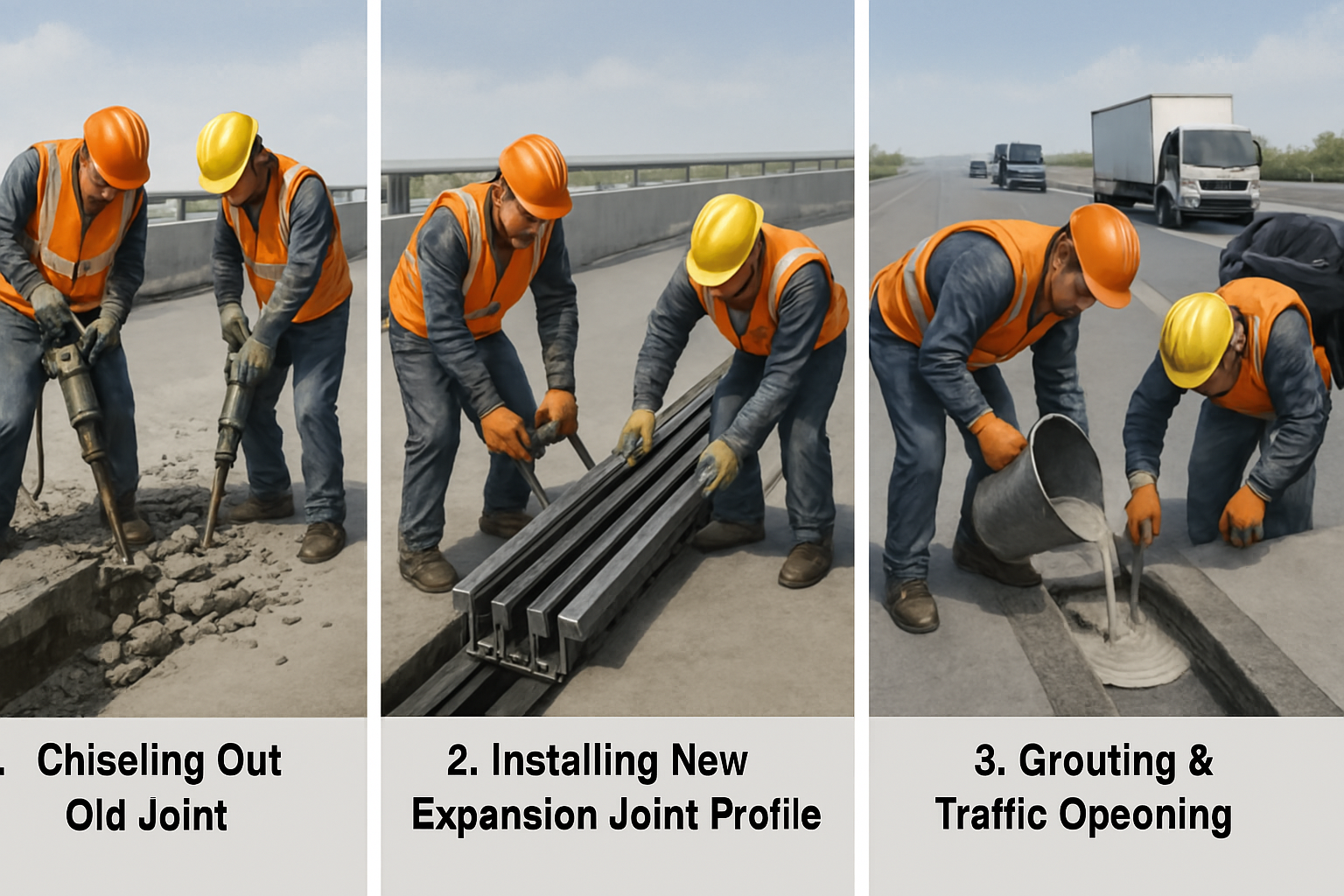Modern transportation relies on bridges designed to endure structural dynamics. At the heart of their resilience are expansion joints—critical components that accommodate thermal expansion, dynamic loads, and structural movements, ensuring bridge safety and longevity.
However, these very movements subject joints to relentless stress, accelerating wear and tear. Damaged joints not only risk structural integrity but also amplify traffic disruptions during prolonged repairs.
Traditional repair methods often require days of lane closures, exacerbating congestion. Our solution? Advanced grouting technologies that address the root challenge: rapid restoration of displacement-absorbing functionality. Engineered materials like Elastic Concrete, Sutong, and XT-2023 enable:
Ultra-fast curing – Joints reopen to traffic within hours, minimizing commuter delays.
Seamless movement accommodation – Restored flexibility to handle ±30% displacement cycles.
Durability under stress – Resistance to cracking from continuous bridge oscillations.
High-Performance Rapid Repair Solutions for Bridge Expansion Joints
Elastic Concrete
Traffic-ready in 2–3 hours (cures at 25°C)
Compressive strength ≥40 MPa, flexural strength ≥10 MPa (7-day)
Superior adhesion to steel, concrete, and glass
Material: 3-component flexible epoxy resin
Key Advantages:
Applications: Highway expansion joints, airport runways, railway repairs
Sutong
≥20 MPa compressive strength in 2 hours
Non-shrinkage, self-leveling flowability
Material: Ultra-early-strength cementitious grout
Key Advantages:
Applications: Rapid repair of bridge deck joints, damaged concrete slabs
XT-2023
≥20 MPa compressive strength in 24 hours, ≥100% elongation at break
Waterproof, freeze-thaw resistant, impact-resistant
Material: Elastic polyurethane concrete (100% solids)
Key Advantages:
Applications: Airport pavements, bridge joint grooves, municipal manhole covers
Remove Old Joint: Chisel out damaged material and clean the substrate.
Install New Profile: Secure a new metal/elastomeric joint system.
Grout & Reopen Traffic: Pour selected material—traffic resumes in 2–24 hours.

Movement Accommodation: Elastic materials absorb thermal expansion/contraction (±30% displacement cycles).
Minimize Traffic Downtime: Rapid curing cuts lane closures by 80%.
Lifecycle Cost Savings: Durable repairs extend service life to 10+ years.
Key Highlights:
Technical specs (e.g., strength, curing time) are retained for credibility.
Focus on user pain points (traffic disruption, structural safety).
Clear alignment with engineering priorities (speed, durability, compliance).

Navigation
Navigation
Contact Us
Get in Touch
Get in Touch
